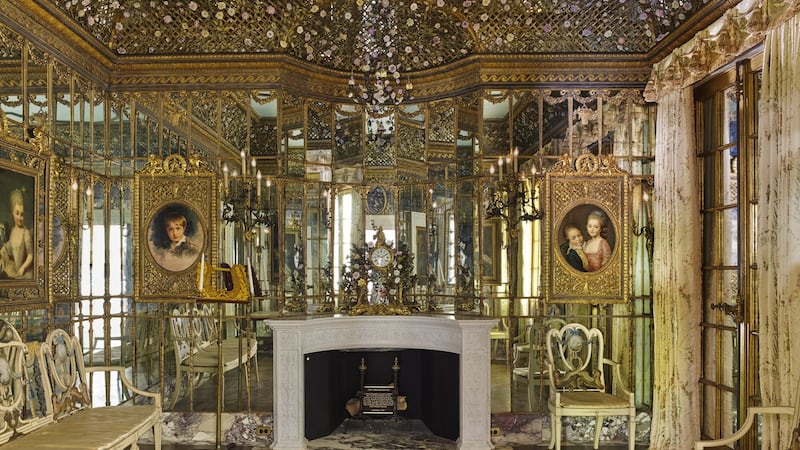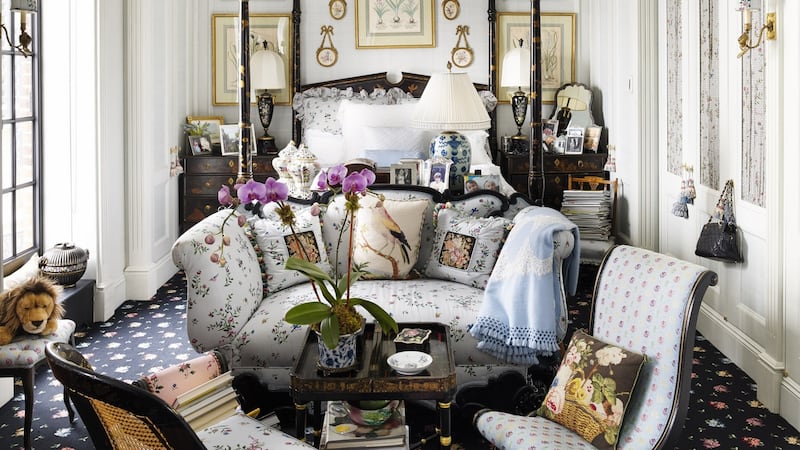To my astonishment I have written and published a big book on New York houses. You could knock me down with a feather. Anyway. This is how it happened.
About three years ago, Jo, a woman whom I love dearly, asked me if I would write a book for her new publishing firm the Pimpernel Press. I told her amiably that she must be mad to embark on such a hopeless endeavour in this era – surely book printing was on its last legs? She ignored this helpfulness and asked what sort of book I would like to write and I said I wouldn’t. She said briskly, well you work in New York and you walk around it and you’re a noticing sort of a person so what about a book on New York houses?
Her insouciance gave me a bit of turn and when I got my breath I asked: “what sort of houses?”
“Whatever you like,” she said. New York is full of them.
But in New York, I told her, any of the houses worth writing about have been converted into apartments, or are schools, institutions, museums, clinics, or owned by secretive oligarchs or grand people whose idea of publicity in a newspaper or magazine is the announcement of Hatch, Match and Dispatch and nothing else; and those rows of brownstones all look the same. And downtown where there are idiosyncratic houses (though they wouldn’t get a second glance in Europe) I don’t know who lives in them so how can I write about them? New Yorkers aren’t exactly mad about strangers knocking on their doors and asking to view the contents. Most of the great houses have been knocked down in the constant state of flux and wanton destruction that is New York.
Look, I said, warming to my rant, it's true that there was a unique architectural movement in New York in the 19th century – look at the great master, Louis Comfort Tiffany and his jewel of a house built for the Havemeyers on Fifth Avenue was destroyed in the 1930's, a disgrace and major loss to the history of American Decorative Arts. The carved marble staircases in some houses were dumped at sea or ended up as landfill. And just as the great houses of Europe were all closing down, Americans were recreating them; their interiors were not just based on European interiors – they actually were European, prised from chateaux and salons. Their era lasted 50 years from 1882 when the first great Vanderbilt mansion was built on Fifth until the start of the depression and they're nearly all destroyed. But you can still see an amazing example in what until recently was the Ralph Lauren flagship shop on 72nd and Madison – but they're no longer what you would call houses ….
Well there you are, she said, you know a great deal.
I don’t, I said, I just get angry about things like that and remember, which is different.
She was setting off for the Frankfurt Book Fair and the upshot of the conversation – mostly me grumbling and whinging – was that I would write a blurb for an imaginary putative book for the catalogue she was putting together to present there. So I did.
Infinite diversity
I wrote about the massive blocks of apartments piled on top of each other, making canyons of the streets below all buzzing with energy. I wrote about the infinite diversity of architectural styles in the tumbling ziggurat that is New York spilling across its neighbourhoods, parks and rivers. I wrote that within its five boroughs are more quartiers and arrondissements than in Paris, more markets and bazaars than in Cairo.
I wrote of how the apartments of the very rich were almost always Edwardian havens designed to escape from the energy and atmosphere outside, and the city was also full of studios and lofts where that energy is generated. I wrote that the grand apartments that line Upper Fifth Avenue across from Central Park have an entirely different feel from those opposite on Central Park West, pinned in the middle by the legendary Dakota building with the John Lennon devotees always milling about outside.
I wrote that from the last great dinosaurian mansions to the Federal style houses in Greenwich village, to the buildings on the flanks of Morningside, from the hipster lofts of Williamsburg and Dumbo to the Victorian houses in Park Slope, every concept of living from ostentatious to gracious, from Shaker-like to frenetic, from glamorous to squalid is on display; and then too such frolicking architectural escapades – the beloved Beaux-Arts style, the monuments by McKim Mead & White, the white brick 1960s behemoth apartment blocks towering above the brownstones; the French gothic chateaux, Italian renaissance palazzi, sham Louis XVI furbelowed facades flaunting themselves next to Georgian-style town houses; baroque-faced churches a block away from prim Puritan chapels, elaborate synagogues next to turreted fantasies and gleaming mirrored office skyscrapers. All utterly New Yorkian. Now that I'd got going and since this was an exercise in selling without commitment I went bouncing along, I wrote that the book would be about the art of living, the act of architecture, the place of ornament and decoration in the seething city, about the ambition and zest and the love of New Yorkers for their surroundings and about the stories connected to them – interiors and exteriors past and present in a visual feast. What was I thinking? Duh.
Reader, Jo sold the book in Germany and the US. And reader I wrote it.
Walking work
I had no idea how to start or where to start. But this I know. I walked. I walked from above Harlem to Brooklyn from Gracie Mansion to the Battery, from Alphabet City to Riverside Drive. I walked in Brooklyn and Queens (Louis Armstrong's house is preserved there) and braved the Bronx. I roamed Staten Island. I know New York in a way that I think few New Yorkers do. I did endless research in the libraries at Columbia University where I was teaching but became overwhelmed by too much information.
And at the end of a year I still had no idea of how to write the book.

I visited the mansion-museums that are left behind – the Frick, the Cooper Hewitt, the astonishing Fletcher-Sinclair monolith now the Ukrainian Institute of America, all on Fifth or but what was the point of rehearsing their well-known history; or else they were the headquarters of big business, or embassies (the Emir of Qatar bought the beautiful Sloane Mansion on East 72nd and restored it to the tune of $15 million but it's like Fort Knox). I read that the 1918 Otto Kahn house, an Italian Renaissance style mansion, one of the largest ever built in Manhattan, modelled on the Papal Chancellery in Rome still existed so I hurried along to find it was now a school preserved in aspic. The great Doris Duke house was part of a university. I felt defeated.
Then three things happened. Annie Schlechter, a brilliant photographer and a native New Yorker whom I had first met by chance in Paris was commissioned to take the photographs of the houses I would produce (hello); her complete confidence both in me and the reality of the book, her wonderful energy and her superb eye for her chosen subjects made me begin to think that it might be done.

And then when Judith one of my best friends in New York took me along to have supper with Friederike Biggs, who lived high up in an enormous block, and I walked into an enchanting Victorian fantasy the penny finally dropped. I didn't need to do houses. I could do apartments – after all they were houses in Americana parlance; and so, the third part of the puzzle fell into place; the places I chose and chased had to be lived in, loved and full of energy. Out went all the mausoleums and ruined beauties, and with them my regret and unhelpful knowledge.
Proustian delight
Friederike's was the first house I did and after that it was easy. I called on friends who told me of apartments they loved and admired. Hamish Bowles the International editor of Vogue was a fount of information and his own apartment was a Proustian delight. He introduced me to Amy Fine Collins, International Editor of Vanity Fair. I was up, up and away. Within a short time I had linked up with artists and writers, poets, creators, editors and garden designers, image bandits, jewellers and professional decorators, photographers and art dealers, architects and fashion editors – in short, the ordinary people of New York. In different niches of the city they opened up their domestic arrangements to show their ways of living – idiosyncratic, curated, aesthetic, unique and also spontaneous, unrehearsed and everyday, and all witty or grand pieces of domestic theatre.

Without really thinking it through I did something different. I wrote a kind of biography of the people who lived in them. So often in these sort of books there is nothing of the idiosyncrasies of the people who put them together and that seemed to me as important as the final result. I knew that of most the owners were collectors (I’m one myself) though not one was a passive consumer. Collecting is a problematic subject. One plausible theory is that it’s an instrument designed not only to allay a basic need brought on by early traumata but also as an escape hatch for feelings of danger and the re-experience of loss. From what I could see all my collectors were making up for loss with a pretty passion. And they were great talkers.
I had scouted 43 apartments before I called a halt. We could only do 24. And yes, we did put in one great surviving mansion: the Payne Whitney house on Museum Mile which now houses the French Cultural Services of the French embassy. Inside is a ravishing mirrored and baroque Venetian interior and the best French bookshop in Manhattan – strike that – the only French book shop in Manhattan. And a perfect little treasure it is. Well, they all are, though I say so myself.
Polly Devlin’s New York: Places to Write Home About, with photographs by Annie Schlechter, published by Pimpernel Press (pimpernelpress.com) is available now from Dubray Books at €45




















